The Ghost in The Machine
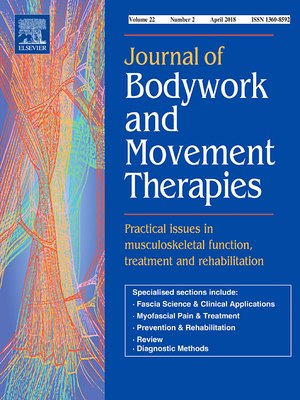
CHEK Faculty Member Matt Wallden and I recently published a paper — The ghost in the machine: Is musculoskeletal medicine lacking soul? — in the Journal of Bodywork and Movement Therapies.
This is a very important article, especially in the rehabilitation environment today for many reasons. In this week’s vlog, I share some key points from it regarding the current state of musculoskeletal medicine. (You can download the 11-page article as a PDF for free for a limited time.)
It opens the door to some things that are long overdue for the medical and rehab community to look at more deeply. Certainly, there are many more therapists and doctors who are much more holistic in their approach, but they are the minority.
Unfortunately, there’s massive amounts of people who go from therapy appointments and doctors to pills, injections and surgeries and get worse rather than better, not to mention the many negative side effects from these treatments. Every time you have a surgical intervention, you have another injury to recover from.
Having spent more than 30 years in this field, I’ve witnessed too many lives being seriously disrupted and damaged by conventional medical approaches.
For acute, traumatic injuries — breaking a leg or sustaining a concussion in a car accident — conventional medicine is effective. When it comes to the rehabilitation of anything physical or psychological, however, the ways conventional medicine approaches these challenges are too tied up in the concepts of Newtonian physics which are outdated by at least a century.
These outdated approaches don’t take into account the advancements of quantum physics and how we can apply that awareness in our daily lives, not to mention that we’ve wandered far away from the wisdom of Native cultures, Medicine Men and Shamans who did a great job with the tools they had for thousands of years.
What we encourage you to do in the article is not to throw the baby out with the bathwater, but to acknowledge that many traditional approaches were very effective.
In fact, if you follow the history of many drugs, a good percentage of them end up being the byproducts of natural approaches that, ultimately, came from native traditions or societies only to be repackaged as things that could be patented and usually synthesized.
In their conversion from natural to synthetic, these once effective substances often lose a lot of their natural harmonics and other medicinal values.
When you use natural medicines, you develop an awareness of what the Earth offers us in nature. But when you get caught up in the conventional medical model, you’re taking a pill to get rid of a symptom without addressing the real cause of the problem.
This week’s vlog highlights some bullet points from the article so you’ll better understand what Matt and I are talking about, which is very appropriate for medical and rehab professionals as well those of you who have a deep interest in the scientific concepts of rehabilitation.
Dancing
Matt and I chose to look at dancing as a corollary for how much good could be done through unguided, unbound and more playful self-expression.
Having rehabilitated more people than I can count, I’ve witnessed repeatedly that people in pain who become involved in activities like dance discover that the joy, spontaneity, creative self-expression and rhythmic movements they feel have a natural medicating effect on pain.
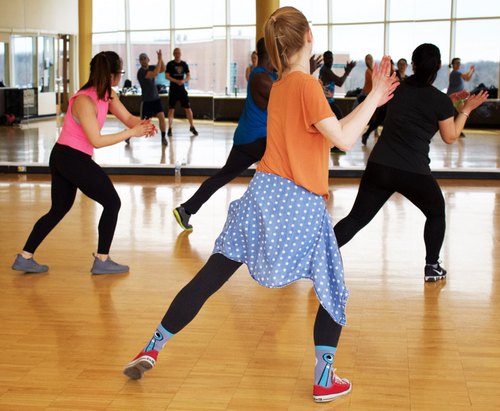
It helps by moving energy through the chakra systems, unblocking stagnant energy and lubricating joints that haven’t moved very well. Even better, these things produce much fewer risks for injury compared to exercise or actual injuries in the workplace.
We examined dance to see how it affects the musculoskeletal system as well as the psyche of the individual.
The traditional medical model uses a linear causation model. If you’ve seen a kinetic model (like the image of steel balls in this week’s blog), you’ll understand why the linear causation model doesn’t work.
One of the main problems with conventional medicine and orthopedic rehabilitation: It’s based on a kinetic link system.
Often, you see the actions of a muscle explained in anatomy textbooks or rehab training but they don’t tell you how the biceps interact with the pectoralis minor or how the pectoralis minor interacts with the external or internal obliques, quadratus lumborum or the muscles of the leg.
They don’t look nearly as deeply into the integrative system, nor do they examine the effects of the subtle energy systems on the structural systems and a lot of other things such as how the mind and emotions affect the physical system.
That model is very outdated and quite complex in research because scientists get into a lot of elaborate models trying to explain things. On the other hand, it’s overly simplistic when it comes to how human beings function in real life and how subtle energy systems like emotions interface with the more tangible systems that are addressed in rehab, i.e. the musculoskeletal system.
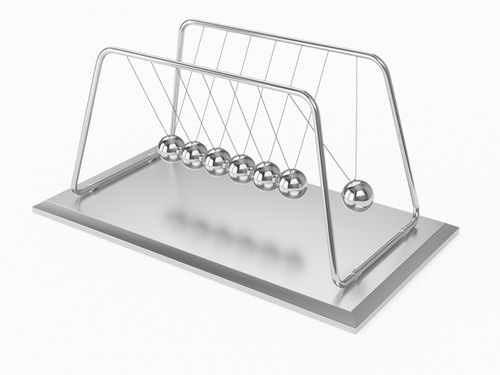
Our proposition
What we propose here is that all systems with complexity have a simplistic foundation. Most rehab experts are overlooking breaches in the simple things that ultimately lead to problems in the musculoskeletal system if not managed properly.
If professionals don’t look at the simple things — diet and other lifestyle factors — their clients will have constant problems with their knees, back, shoulders, neck and wrists, and the list keeps growing.
A key factor in injuries, and particularly structural injuries, of all kinds is inflammation. There’s so many drugs you can use for inflammation, but too many professionals forget things like the ergonomics of a client’s home environment (are their beds or furniture appropriate for their continued good health?).
Maybe, a client eating processed foods full of additives, preservatives, colorings and other chemicals — there’s some 68,000 of them used in processing foods — which produce gastrointestinal problems and systemic inflammation.
Again, those things are rarely reviewed, yet they sensitize the body, and alter pH levels that generally make the body more acidic. These factors set up a person for chronic musculoskeletal aches and pains that will never go away without addressing very simple things, like whether you’re eating effectively for your individual needs.
Consciousness and pain
Edward Edinger’s definition of consciousness is very important here, especially when a CHEK Professional is working with a client who suffers from a lot of pain. It’s a psychic substance — meaning it’s real and produced, but not blindly — in living awareness of opposites (north to south, up and down or inside and outside). Those polarities have to be in play for us to be conscious of anything.
So, when clients are doing any kind of rehab, many reasons why they come to us for help are because events make them more conscious of how they’re managing themselves in the environments that led directly to their injuries and other health problems.
It’s the job of the skilled therapist or physician to make people aware of all of it. But if those same practitioners are merely centralizing disks and sending clients back to their jobs without showing them how to eat properly and explain the connection between gut inflammation and stability of the spine, their clients will just keep injuring themselves.
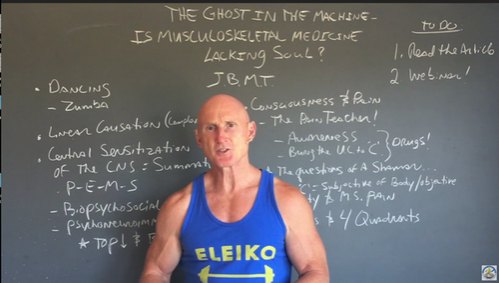
In short order, the pain teacher just keeps roaring back into their lives with a vengeance as it brings conscious awareness of all of these unconscious behaviors. If you think about it, that’s a beautiful function of pain that traditional forms of rehab don’t look at either.
In my vlog, I also discuss the soul — the consciousness within you — and spirituality, your connection to the greater whole. We couldn’t be here if it wasn’t for the Earth. If you’re not connected enough to be aware of what the Earth provides and what we need from it, you can rehab all you want but you’ll never address the real problem.
A person who isn’t spiritually connected only has work, their bills and TV which shows them more stories about people who are living just like them, so it’s an existence that’s not inspiring.
Our paper is followed up with a more practical one where we discuss the 4 Doctors and Ken Wilber’s Four Quadrants. There, we describe how to break life down into the 4 Doctors and how life unfolds.
Our upcoming webinar
You’ll have a great opportunity to ask any questions you want about our paper with Matt and me in a free webinar we will be conducting Thursday, June 28 from noon-1:30 (Pacific Time).
In the meantime, I’m really look forward to reading your comments about this paper.
Love and chi,
Paul

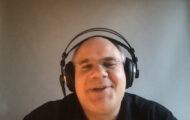

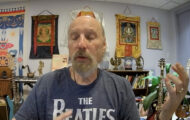










Find me on the web